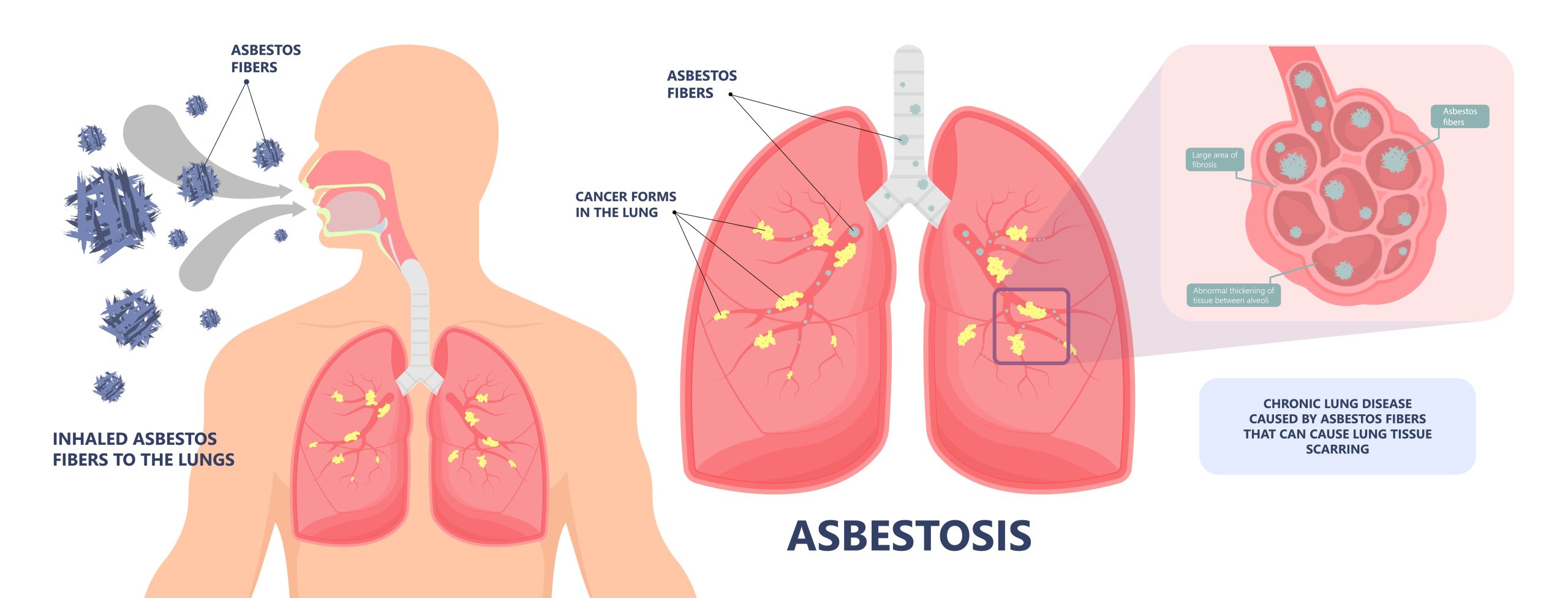Occupational Lung Disease: How To Prevent It

When most of us think about work-related injuries or illnesses, we probably think about accidental trips or falls, or perhaps musculoskeletal issues that arise due to improper ergonomic layout of work areas. If you work in the construction industry or other work environments that require heavy lifting, muscle strains and other similar injuries may also be common.
However, occupational lung disease is actually one of the most prevalent and dangerous workplace illnesses that could potentially affect millions of workers in dozens of different industries and occupations.
Consider the following:
- The worldwide incidence of pneumoconiosis and other occupational chronic respiratory diseases have been estimated at 453,000 and 2,631,000 cases per year, respectively.
- Occupational lung diseases are the primary cause of occupation-associated illness in the U.S. based on frequency, severity, and preventability of the illnesses.
- According to Johns Hopkins Medicine, “most occupational lung diseases are caused by repeated, long-term exposure, but even a severe, single exposure to a hazardous agent can damage the lungs.”
Occupational lung disease can lead to severe, long-term health complications for several types of workers. It can also cut into a company’s profit margins through employee missed work time, workers comp payments, and lower productivity levels in the workplace.
Below, we briefly explain the occupational lung disease symptoms, the industries most susceptible to this type of disease, and then outline a few things that every company can do for the prevention of occupational lung disease.
Top Symptoms of Occupational Lung Disease
There are actually several different types of occupational lung diseases, from occupational asthma to miner’s lung disease that was once extremely prevalent amongst most mine workers in the world. However, most types of occupational lung disease will have symptoms that are typical of respiratory infections and ailments.
Common symptoms may include:
- Coughing
- Shortness of breath
- Chest pain
- Chest tightness
- Abnormal breathing pattern

Top Industries at Risk for Occupational Lung Disease
Because of the unfortunately high prevalence of chemicals and other toxins in our fabricated environment, almost every worker may be at some risk for suffering occupational lung disease. However, there are some businesses and industries that are at higher risk.
Here are the top three industries at risk for occupational lung disease:
- Textile Manufacturing
Textile workers are at a higher risk of developing Byssinosis, also called brown lung disease. This respiratory disease occurs when workers inhale particles released from cotton or other materials. - Construction Industry
Though all construction workers are at higher risk for suffering from occupational lung disease, those involved in demolition of buildings are at a higher risk. Many older buildings may be exposed to asbestos, which was used as insulation around pipes or in floor tiles. This exposure also seems to raise the risk of small-cell lung cancer and can lead to asbestosis, or scarring of the lung. - Hair and Nail Salons
Lastly, there are several asthma triggers found in nail and hair salons. These triggers can include fingernail glue remover, artificial nail liquid, formaldehyde in nail polish and nail hardener, disinfectants, hair sprays, hair dyes, and more.
Strategies for Preventing Occupational Lung Disease
The first step in preventing occupational lung disease in the workplace is identifying the particular hazards that could lead to respiratory problems in your workers. Once identified, specific protocols and policies can be developed to eliminate or reduce exposure to the contaminants, chemicals, emissions, or other air-borne hazards that could affect your employees.
However, every industry can develop a prevention strategy based on four primary points:
- Replace hazardous materials and emissions in the workplace with less hazardous materials. For example, you can choose to repaint the office with a zero-VOC paint instead of a toxic paint that might give your workers a headache and exacerbate their existing asthma problems.
- Secondly, it is important to develop strict engineering controls such as adequate ventilation to help keep workplace environments free from the accumulation of airborne toxins.
- In extreme cases where exposure to airborne contaminants might be inevitable, make it a priority to provide all workers with proper respirators and/or personal protective equipment (PPE).
- Lastly, ensure your business is in compliance with all relevant OSHA regulations regarding the reduction of workplace hazards.
Breathe Easy With Work-Fit
Whatever industry you’re in, you may also consider hiring a third party, independent company to help you develop the best strategies for preventing occupational lung disease among your employees. Work-Fit is a leading onsite and telehealth injury prevention and wellness management team for your workforce.
Our injury prevention program is a great resource that can help businesses in every industry identify the specific workplace hazards that could contribute to occupational lung disease. We can also help you design a holistic prevention strategy to protect the health of your workers and your bottom line!
Contact Work-Fit today to see how we can help you avoid the negative consequences of occupational lung disease.



